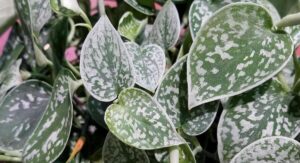
One of the most aptly named plants is the Cast Iron Plant, or Aspidistra elatior. Those dark green, strappy leaves seem like they could withstand just about anything, which perfectly suits its reputation as a near-indestructible indoor plant.
I’ve had my Cast Iron Plant for years now, and it has survived multiple moves with very little fuss. What I appreciate most is not having to baby it – just water occasionally and it’s happy as can be. Its tough nature makes it an excellent choice if you’re new to keeping houseplants alive.
- Pros
- Extremely hardy and tolerant of neglect
- Thrives in low-light conditions
- Purifies indoor air
- Attractive dark green foliage
- Easy to care for
- Cons
- Slow growing
- Potentially toxic to pets if ingested
- Prone to occasional pests
In this article
- 1 Appearance of the Cast Iron Plant
- 2 Caring for the Cast Iron Plant
- 3 Toxicity Level of the Cast Iron Plant
- 4 Light Requirements for the Cast Iron Plant
- 5 Watering the Cast Iron Plant
- 6 Fertilizing the Cast Iron Plant
- 7 Potting the Cast Iron Plant
- 8 Propagation of the Cast Iron Plant
- 9 Growth and Development
- 10 Managing Pests and Diseases
- 11 Complimentary Plants
Appearance of the Cast Iron Plant

As the name implies, this plant has tough, leathery leaves that are deep green in color and grow in an ascending pattern from the soil. Its leaves are elongate and strap-like, ranging from 10-25cm long and 3-6cm wide.
You’ll find the Cast Iron Plant growing to approximately 1-2ft tall and wide given its space and growing conditions. What I appreciate beyond its easy care, is how its lush deep green leaves provide an elegant touch of formality.
Great for People who:
Love low maintenance plants and want one they literally can’t kill. It’s extremely forgiving of irregular care.
Great for these Spaces:
Any spot in your home that gets medium to low indirect light, such as under a table. It removes pollutants from indoor air too.
Caring for the Cast Iron Plant
These plants are true survivors that can withstand long periods of dry soil and low light. Water when the top inch is dry, around every 2-4 weeks depending on conditions. They prefer to be on the drier side. Ample drainage is key so water until it flows through.
Toxicity Level of the Cast Iron Plant
While not considered highly toxic, Cast Iron Plants can cause mild stomach upset if large quantities are ingested. Keep it out of reach of pets and wash hands after touching.
Light Requirements for the Cast Iron Plant

The Cast Iron Plants thrive in low to medium indirect light levels, up to around 1000-1500 lux. They tolerate very low light but may lose some vibrancy.
| Light Conditions | Effect on Cast Iron Plant |
|---|---|
| Low Light | Will survive but leaves may be sparser |
| Medium Indirect Light | Ideal – provides consistent growth |
| Direct Sunlight | Can scorch leaves, avoid full exposure |
Near a north facing window works well. Adjust watering if light levels change seasonally.
Watering the Cast Iron Plant

- Water when the top 1-2 inches of soil are dry
- Allow soil to become quite dry between waterings
- Use room temperature filtered water for best results
- Check soil moisture frequently as it can go a while without water
Fertilizing the Cast Iron Plant

Liquid Plant Food & Fertilizer for Houseplants
This potent liquid fertilizer promotes faster and healthier growth, ideal for both indoor plant food and garden applications.
Feed with a diluted liquid houseplant fertilizer 1-2 times during the spring and summer growth seasons. Follow label instructions and cut back if you see any burning.
Potting the Cast Iron Plant
Repot every 1-2 years, or when new roots appear from the drainage holes. Use a well-draining potting mix and transfer with care not to damage roots.
Propagation of the Cast Iron Plant
Cast Iron Plants can be propagated via division of larger clumps or by separating offshoots. Work gently to separate intact portions containing nodes, roots and leaves. Root in damp soil medium.
Growth and Development
Expect very slow growth, just 1-2 inches per year. Prune off any dead or soggy leaves. Rotate plants occasionally for even growth. Provide consistent low light and slight moisture for durable foliage.
Managing Pests and Diseases
Occasional issues could include spider mites or mealybugs. Check closely for any signs of infestation. Treat promptly by wiping leaves with alcohol or applying insecticidal soap. Improve ventilation if needed.
Complimentary Plants
If you’re looking for a nearly un-killable houseplant to complement your home, the resilient Cast Iron Plant is an excellent choice. Years later and with extreme neglect, mine is still going strong, reminding me why it deserves its practically indestructible reputation. For low effort green therapy, it really can’t be beat.
Frequently asked questions
Why are new leaves coming in yellow?
It may need more light exposure to fully photosynthesize. Rotate and raise light levels gradually.
Can Cast Iron Plants be grown outdoors in summer?
Yes, they tolerate full to partial shade outdoors as long as temperatures stay above 50°F.
How long can I go without watering?
The Cast Iron Plant is an impressive xerophyte that can withstand 2-4 weeks without water depending on conditions.
Happy gardening!







